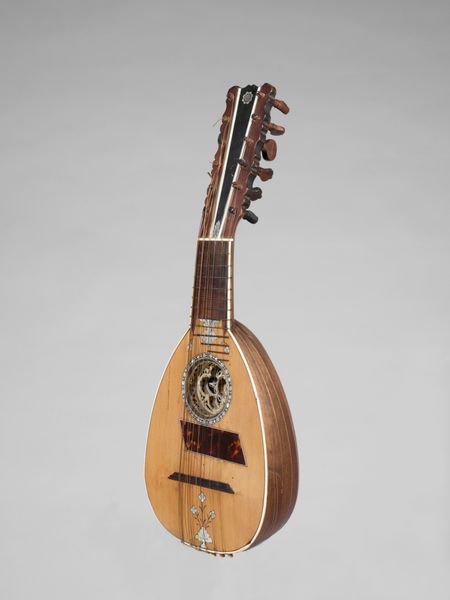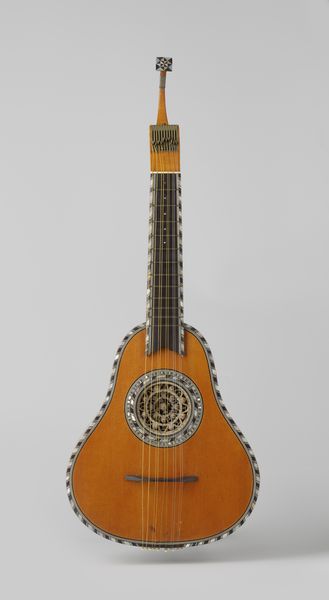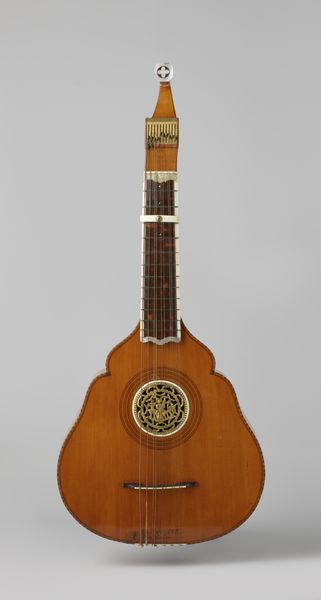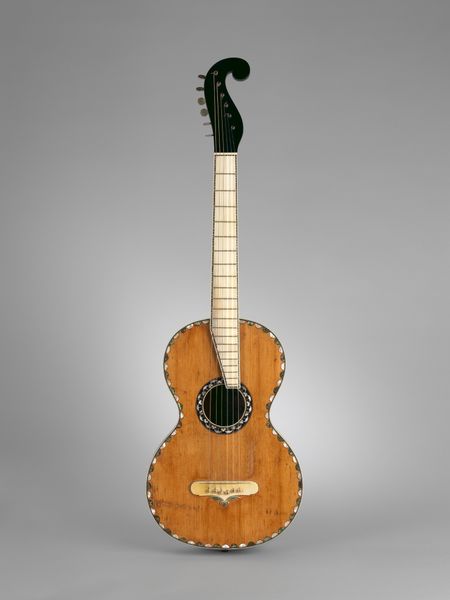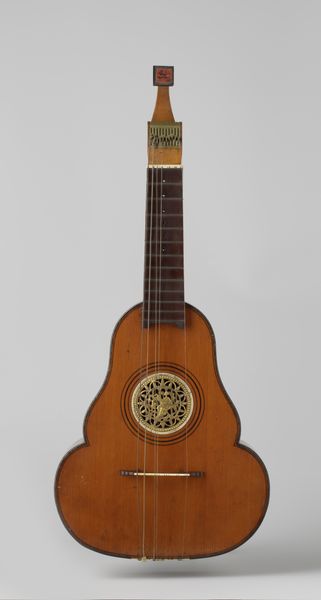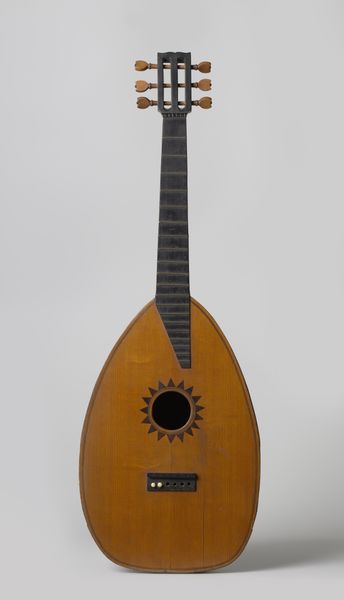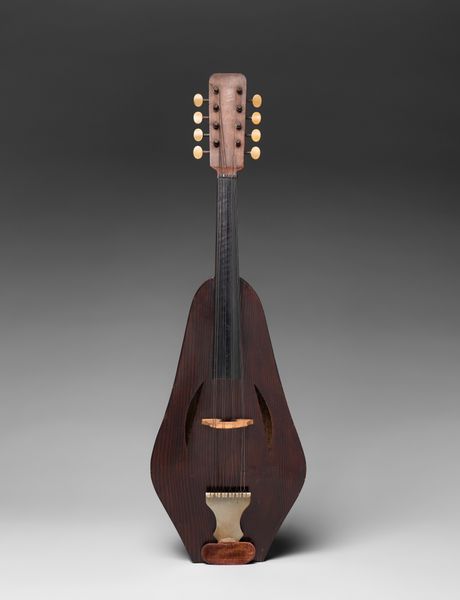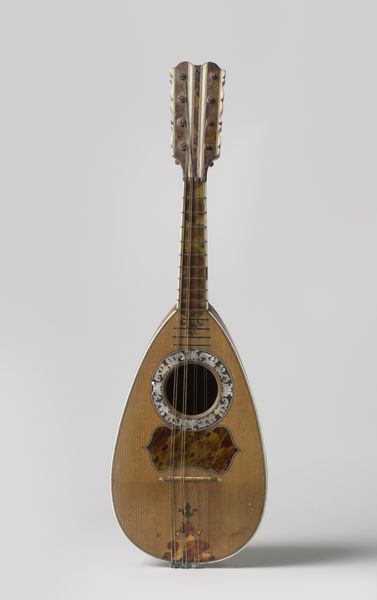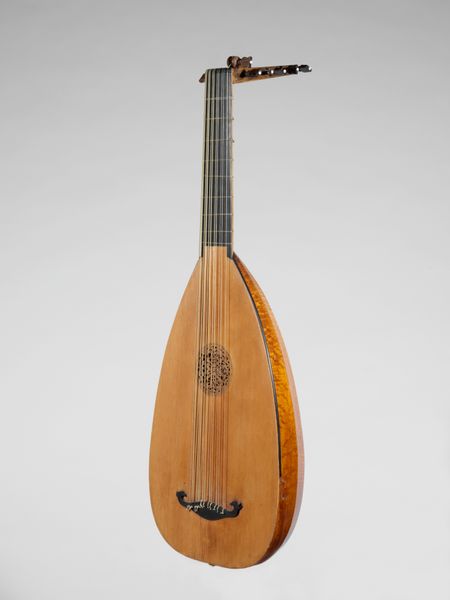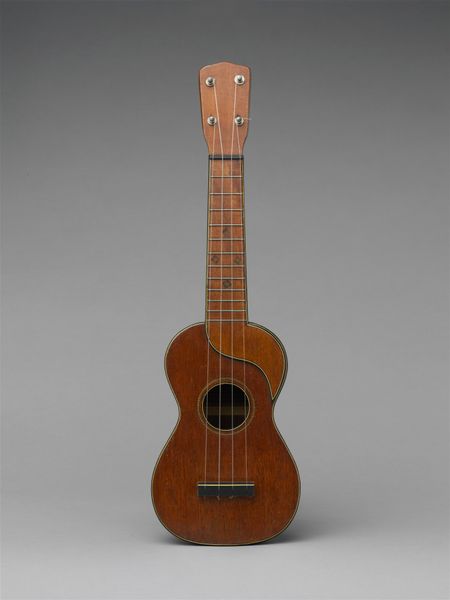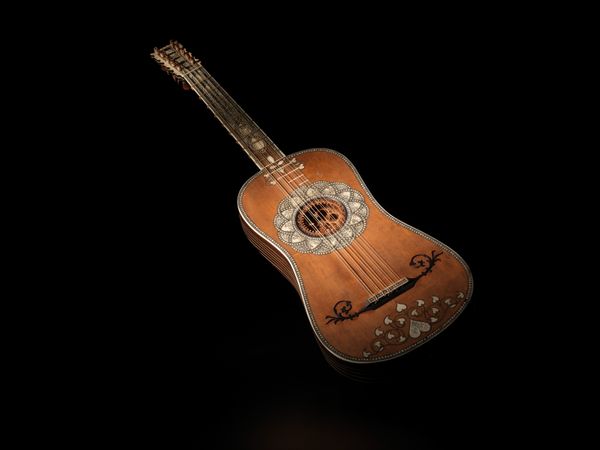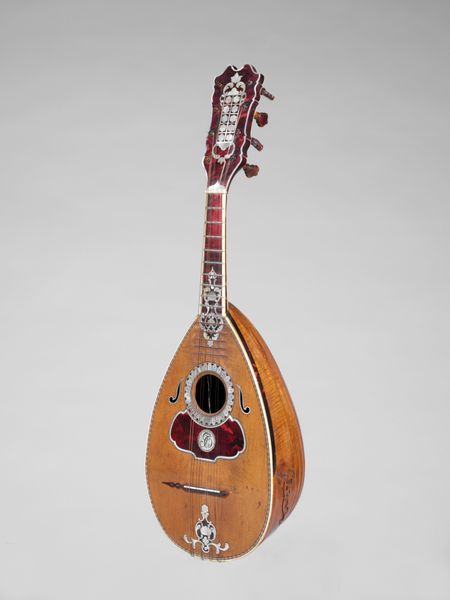
wood
#
wood
#
musical-instrument
Dimensions: Total L.: 99.6 cm (39 in.); Maximum body W.: 32.2 cm (12-3/4 in.)
Copyright: Public Domain
Curator: Here we have an exquisite arch cittern, crafted in 1782 by Jean Francois Tiphanon. You can find it here at the Metropolitan Museum of Art. What strikes you most about it? Editor: Immediately, the clarity of its lines. That tear-drop form resolving into a graceful neck; the geometric precision of the frets against the airy spread of the strings. Visually, it's very satisfying. Curator: Indeed. These citterns weren't simply decorative; they were a tool for the popular music of their time. Reflect on the artisans, the availability of fine wood, the society eager to consume such luxuries in 18th-century Europe. What social forces shaped this desire for intricate sound? Editor: A good point. But focusing on the instrument itself: the rosette is striking. It seems delicate and refined. How does the use of varied materials change its textural properties? How do you think it might impact the timbre of the sound itself? Curator: Precisely! Tiphanon demonstrates a remarkable understanding of material properties – the careful selection and seasoning of the wood, the tension of the strings... these dictated not only its sound but its longevity. It provides us with tangible clues about craft knowledge in the late 1700s. What can we infer from these designs about cultural status? Editor: Beyond that social reflection, you’ve also got this radiating effect, leading towards the sound hole. A clear demonstration of visual emphasis. Curator: Yes, it emphasizes a focal point of the construction, the origin from which music escapes. Did you know that citterns were a relatively accessible instrument, commonly played by amateurs? Now consider its context within domestic spaces, female musicians, and the popular ballads sung and accompanied. Editor: Fascinating. But from a design standpoint, those parallel lines really emphasize linearity... it leads our eyes along the strings... Curator: An astute observation, certainly. However, I also think it opens an interesting door into discussing class, artistry, and material culture. It really illustrates so much more than visual qualities and harmony of shape. Editor: Agreed. It’s undeniable. Though from this glimpse alone, its beauty feels rather evident. I leave with this.
Comments
No comments
Be the first to comment and join the conversation on the ultimate creative platform.
